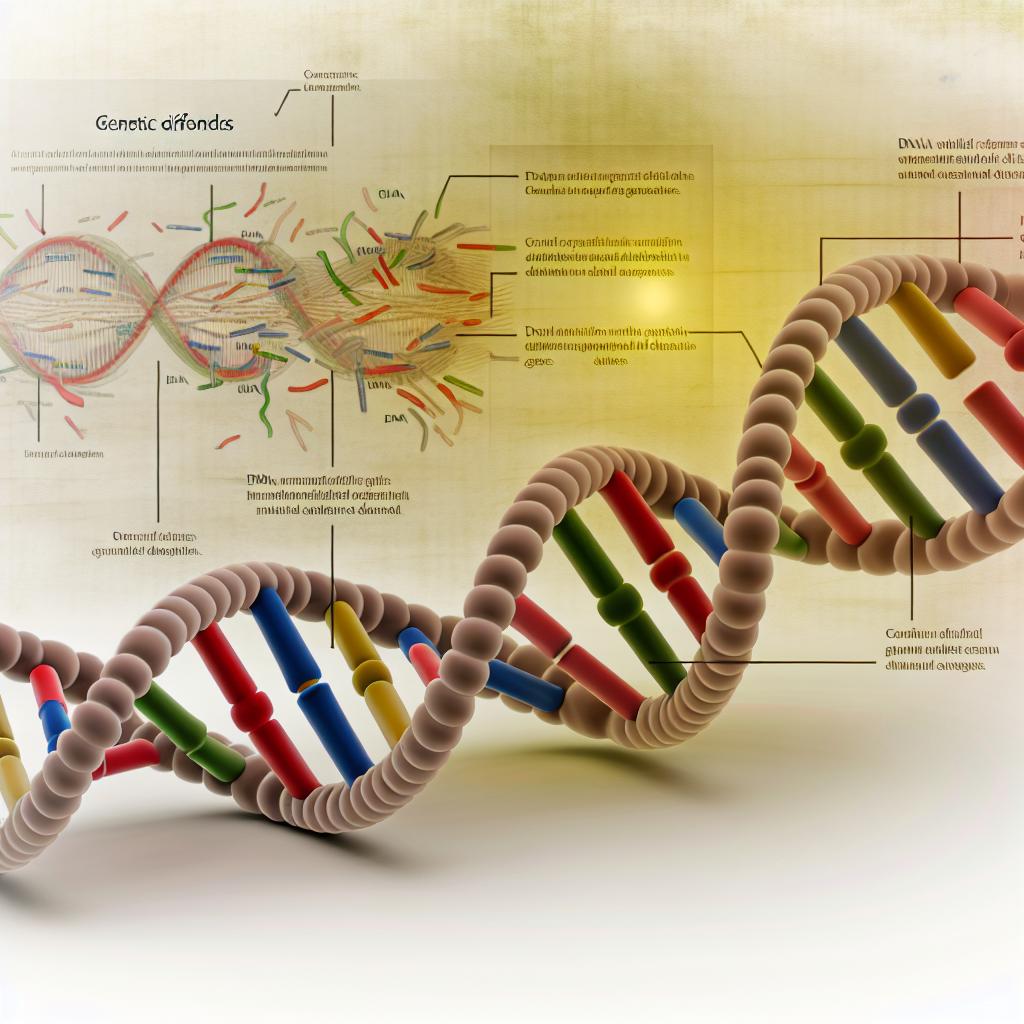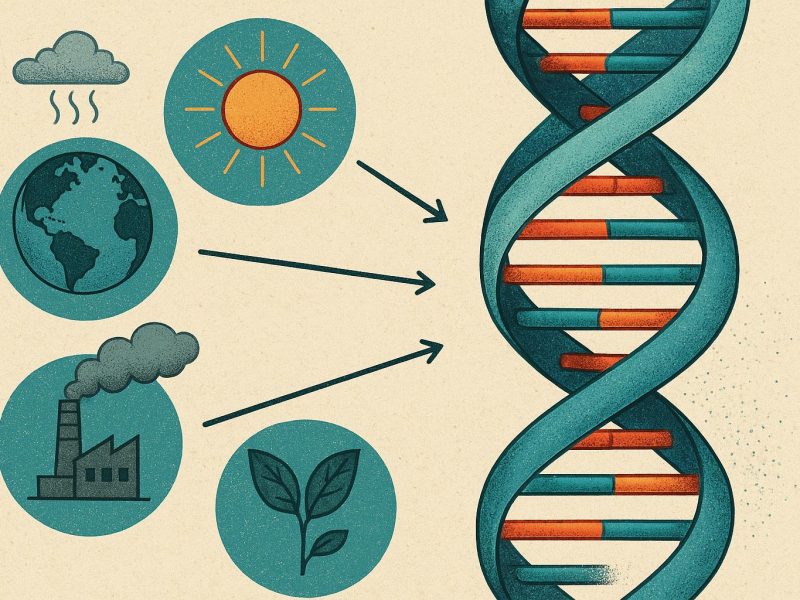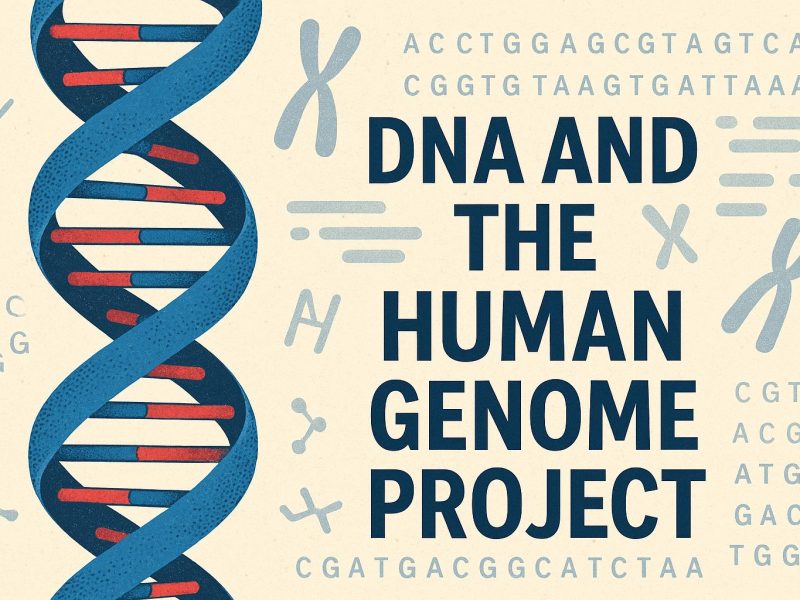Understanding Genetic Disorders and Their Connection to DNA
Genetic disorders are a significant field within medical research and healthcare, primarily originating from anomalies in an individual’s DNA. DNA is the hereditary material that carries all the genetic information necessary for an organism’s growth, development, and function. Comprising long sequences of nucleotides, DNA encodes the instructions that cells need to create proteins and maintain biological processes. Disruptions in these sequences can lead to various genetic disorders, each with unique implications for the individual’s health.
The Role of DNA in Genetic Disorders
Genetic disorders are fundamentally linked to the integrity and function of DNA. Any damage or mutations that occur within the DNA can lead to alterations in gene functionality, affecting the biological systems dependent on these genes. Mutations that cause such disorders can either be inherited or occur spontaneously.
Inherited mutations are those passed down from one or both parents. Traits governed by these mutations can include hereditary conditions such as certain forms of anemia or muscular dystrophies. On the other hand, spontaneous mutations, also referred to as de novo mutations, occur independently during an individual’s lifetime. These mutations often result from environmental factors like exposure to UV radiation or errors during DNA replication processes.
Understanding the differences between these types of mutations is important because it influences the strategies used for diagnosing and managing genetic disorders.
Types of Genetic Disorders
Genetic disorders can be categorized into three main types, each with distinct characteristics:
1. **Single-Gene Disorders:** These disorders stem from mutations in a single gene. Such mutations can have significant effects on the organism despite involving only one genetic component. Diseases such as cystic fibrosis, sickle cell anemia, and Huntington’s disease fall under this category due to specific identifiable mutations within single genes.
2. **Chromosomal Disorders:** These disorders arise from changes at the chromosomal level, either through the gain, loss, or structural alteration of whole chromosomes or large chromosomal segments. Down syndrome, for instance, is one of the most well-recognized chromosomal disorders and occurs due to an extra copy of chromosome 21, affecting various developmental and physical traits.
3. **Complex Disorders:** Also termed polygenic disorders, these conditions result from a combination of multiple genetic factors coupled with environmental influences. Conditions like heart disease and diabetes exemplify complex disorders as they mirror the intricate interplay between various genes and lifestyle factors. Understanding these requires a multi-faceted approach to research encompassing genetics, epidemiology, and public health.
Linking Mutations to Disorders
Understanding how specific genetic mutations lead to disorders involves studying the types of mutations that occur within the DNA. The most common mutations include point mutations, insertions, and deletions.
A point mutation is defined as a change affecting a single nucleotide in the DNA sequence. This seemingly minor alteration can have considerable effects, potentially leading to incorrect or nonfunctional proteins. Insertions and deletions of nucleotides may cause shifts in the reading frame of the DNA sequence, dramatically affecting the gene’s expression and function.
Researchers aim to pinpoint which mutations are responsible for specific disorders. This endeavor not only aids in diagnoses but also in understanding disease mechanisms, which is critical for developing therapeutic interventions.
Discovering Genetic Links Through Research
Research into genetic disorders relies heavily on advancements in genomics. The ability to sequence entire genomes has enabled scientists to identify genetic variations associated with particular health conditions. This research plays a crucial role in developing targeted therapies that are personalized based on an individual’s genetic makeup. Personalized medicine, which tailors medical treatment to the individual characteristics of each patient, can significantly enhance the effectiveness of interventions.
Through rigorous genetic research, scientists are now able to explore the potential for prevention alongside treatment. For example, identifying individuals at risk of hereditary disorders before they manifest allows for early intervention strategies which may include lifestyle adjustments or medical oversight.
This expanding understanding of genetic links to disorders also offers hope in the realm of preventive medicine. As researchers continue to identify and comprehend the genetic underpinnings of diseases, the possibility of developing strategic prevention measures increases, bringing significant benefits to public health initiatives globally.
In conclusion, the connection between genetic disorders and DNA is both intricate and complex. Exploring further how mutations affect genetic expression remains a critical pursuit in modern science. Such exploration is continuously unraveling the mysteries surrounding these conditions, ultimately offering promising new avenues in medical treatment. Improved diagnostic tools and therapies based on genetic knowledge enhance the quality of life for individuals affected by these disorders and provide a foundation for future advancements in healthcare.



